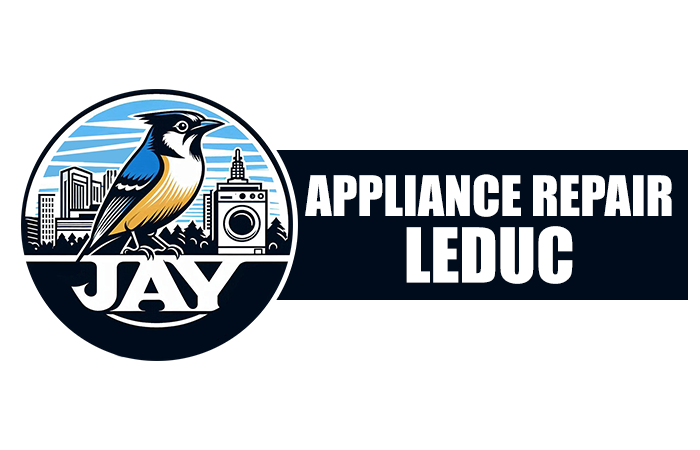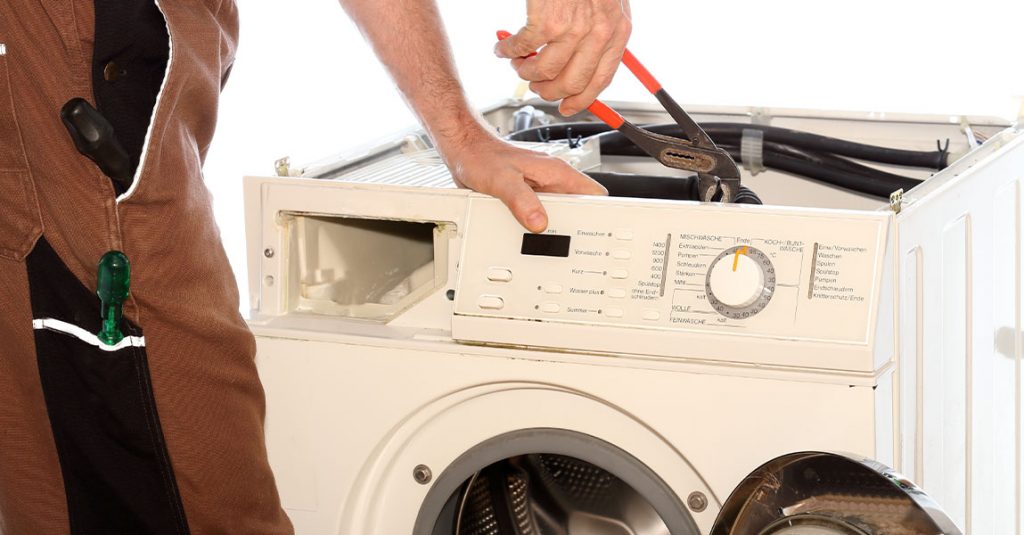When our top-load washer suddenly stops draining after a wash cycle, it can throw off the entire laundry routine. We expect the machine to finish its cycle and leave clothes ready for the dryer. However, when water sits in the drum, something’s clearly wrong. Therefore, one of the first places we look is the lid switch. It might seem like a small part, but it plays a key role in how the washer operates.
The lid switch acts as a safety mechanism. That is to say, it prevents the washer from spinning or draining if the lid is open. While this feature is essential for safety, it also means a faulty lid switch can stop the cycle entirely. In this post, we’ll go over what the lid switch does, how to inspect it, and what to consider if your washer still won’t drain.
What the Lid Switch Does in a Top-Load Washer
The lid switch tells the washer that the lid is closed. Consequently, this allows the machine to proceed with spinning and draining. If the switch doesn’t engage, the machine may think the lid is open even when it’s shut. In other words, the machine won’t move into the drain cycle because it thinks it’s unsafe.
We often take this switch for granted. However, it’s one of the most common culprits when a top-load washer fails to drain. Above all, this component must make contact every time the lid shuts for the washer to operate correctly. If it becomes loose, worn out, or broken, drainage issues will follow.
The good news is that the lid switch is one of the easier parts to inspect. For instance, most models allow access to the switch by simply removing a few screws or lifting the top panel.
Signs the Lid Switch Might Be the Problem
So how do we know if the lid switch is the issue? Firstly, we check if the machine fills and agitates normally. If it does but stops right before draining, that points toward the lid switch. In addition, some models may make a clicking sound when the lid closes properly. If that sound is missing, it’s a red flag.
Sometimes, the machine will just stop mid-cycle and make no attempt to drain. However, other times it may hum as if it’s trying but not able to proceed. In both cases, the lid switch is worth testing. Most importantly, we look for inconsistency. If the washer drains one day but not the next, we might be dealing with a failing lid switch rather than a totally broken one.
Before doing anything else, we always unplug the washer to avoid electrical shock. After that, we move on to a few basic inspection steps.
How to Check the Lid Switch Safely
To start, we open the washer lid and look for the switch. Typically, it’s a small plastic or metal button near the rim where the lid touches the body. When the lid closes, this button is pressed down. To clarify, if the lid no longer lines up with the switch or if the button doesn’t depress, that’s a major clue.
With the machine unplugged, we can use a multimeter to test the continuity of the lid switch. In simple terms, this tells us whether the switch is allowing electricity to flow through when it should. If the multimeter shows no continuity when the switch is engaged, we know it’s time for a replacement.
Some washers also come with a lid lock mechanism in place of a switch. Likewise, this can fail over time. Regardless of the model, we take care not to force any parts open or shut. A cracked housing or misaligned latch could make the situation worse.
When we’re not sure or we don’t have tools on hand, it’s a smart move to call in help. We’ve handled many cases like this at appliance repair in Leduc, and we often find that early intervention prevents water damage and bigger costs later.
Replacing the Lid Switch: Is It Worth It?
Once we’ve identified a faulty lid switch, the next question is whether to replace it ourselves or get assistance. Most top-load washers use inexpensive switches. Therefore, replacement parts are easy to find online or at a local appliance store. In many cases, removing a couple of screws and unclipping a wire harness is all that’s needed.
However, we don’t want to rush the job. That is to say, improper installation could cause the switch to malfunction again or result in safety issues. We recommend checking your user manual for your model’s exact instructions.
Some washers include a built-in diagnostic mode. If so, we can use it to confirm a lid switch error. In addition, it may help uncover any related issues like control board faults or wiring damage.
We’ve noticed over time that people often replace working parts because they’re unsure of the cause. Most importantly, we always advise a quick professional check before spending on unnecessary components. If needed, you can book a detailed washer repair in Leduc to ensure the problem is handled right the first time.
Other Parts to Check If the Washer Still Won’t Drain
If the lid switch tests fine and the machine still won’t drain, we dig deeper. Sometimes the issue lies in the drain pump. For example, a small object like a sock or coin may clog the pump, making it stop mid-cycle. In other cases, the impeller might be jammed or the motor burned out.
We also check the drain hose. That is to say, we look for kinks, clogs, or blockages that prevent water from flowing out. If water tries to drain but backs up quickly, that’s a clue the hose or pump could be the real issue.
In addition, control board problems can mimic lid switch failures. When the board doesn’t send the proper signal, the washer assumes the lid is open. However, this is less common than a simple faulty switch.
It’s helpful to know the full drainage path: from the tub to the pump, through the hose, and out to the home’s drainage system. A problem in any part of this path can result in standing water in the drum. Above all, we try to rule out one component at a time.
Long-Term Prevention and Simple Habits
While mechanical failure isn’t always avoidable, there are ways to prevent lid switch problems. For instance, we avoid slamming the lid shut. Gentle use keeps the switch aligned. Moreover, we keep the top area clean and dry to avoid corrosion or gunk buildup around the switch area.
We also try not to overload the washer. Heavy loads can put strain on the drum, lid, and internal components. Over time, this can shift the alignment and make the lid switch wear out faster. Similarly, frequent hard closures can weaken the plastic or metal housing of the switch.
In the long run, regular checks and gentle habits help reduce unexpected failures. Likewise, having our washer inspected every couple of years by a technician gives us peace of mind. If anything looks worn or misaligned, we prefer catching it early rather than dealing with a complete breakdown.
When a washer stops draining, it creates more than just an inconvenience. That’s why we always encourage reaching out if you’re unsure about any part of the process. If your machine shows signs of trouble, you can Contact Us to schedule a visit or get practical advice from a local expert.
Frequently Asked Questions
How do I know if my lid switch is broken?
If the washer fills and agitates but won’t drain or spin, that’s a strong sign. You might also notice that the usual “click” sound is missing when the lid closes.
Can I bypass the lid switch temporarily?
While some guides show how to bypass it, we don’t recommend it. The lid switch is a safety feature. Removing or bypassing it can cause injuries or damage during spin cycles.
Is the lid switch the same as a lid lock?
Not exactly. A lid switch confirms the lid is closed, while a lid lock physically prevents the lid from opening during operation. Some washers have both.
Will replacing the lid switch fix the drain issue for sure?
If the lid switch is the cause, then yes, replacing it usually solves the problem. However, if the issue lies elsewhere—like the pump or drain hose—it won’t help.

